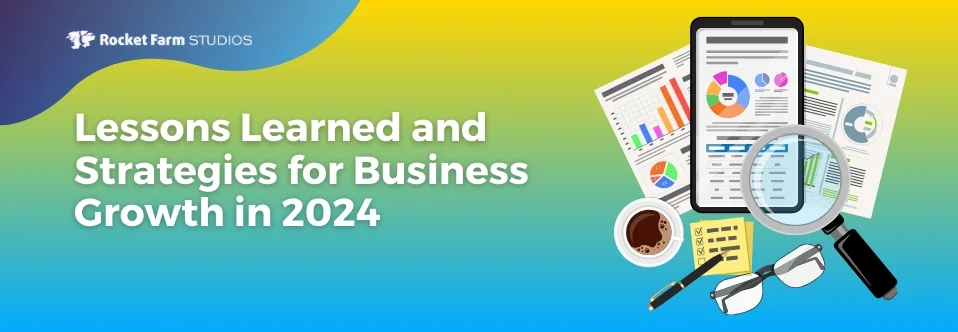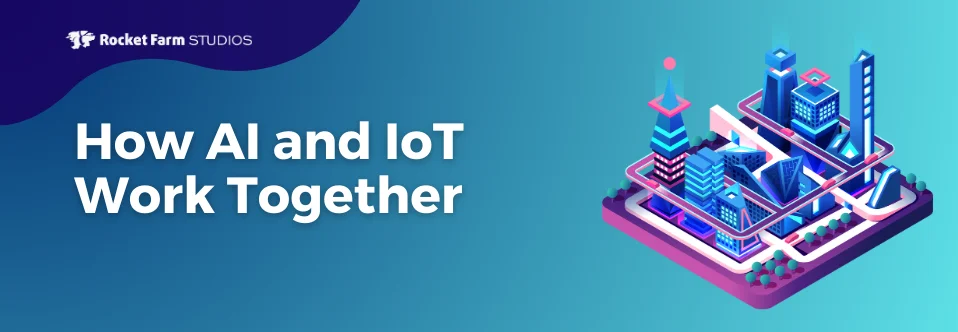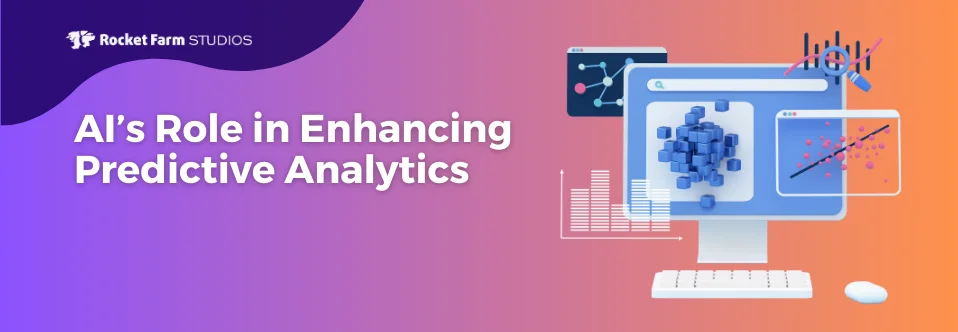
If you’re considering integrating artificial intelligence into your business, you’re likely aware of its widespread influence, from enhancing everyday products to streamlining operations across industries. The potential of AI is significant, offering innovative solutions and efficiency improvements. However, making the decision to invest in AI involves a careful evaluation of its financial aspects. Understanding the costs associated with implementing AI can be challenging, but it’s crucial for making informed decisions that align with your business goals.
Investing in AI is not just about leveraging new technology; it’s about making a strategic financial investment that could transform aspects of your business. This means looking closely at initial costs, ongoing expenses, and the potential return on investment. Whether you’re aiming to improve customer experiences, optimize operational processes, or introduce new products, it’s important to approach AI as both a technological and financial decision.
As we delve into the costs and benefits of AI, our goal is to provide clarity and insight to help you navigate this decision. Understanding the financial commitment involved in AI projects is key to planning effectively and ensuring that your investment delivers the expected value to your business.
Setting the Stage for AI Investments
AI’s Economic Impact: A Bird’s Eye View
Imagine walking through a market where every stall offers something groundbreaking—products and services you didn’t even know you needed. That’s kind of what the AI landscape looks like today. It’s bustling, innovative, and impacting every sector you can think of: healthcare is becoming more predictive, manufacturing more efficient, and customer service more personalized.
But let’s talk numbers, because they truly paint a picture. According to recent studies, AI could add up to $15.7 trillion to the global economy by 2030. That’s the kind of growth that transforms industries and livelihoods. From automating routine tasks to solving complex problems, AI is not just a nice-to-have; it’s becoming a must-have for staying competitive.
Meet Our Guide: TechWidgets Inc.
In our exploration of AI investments, we’ll be guided by the experiences of TechWidgets Inc., a fictional but insightful example of a medium-sized tech firm that specializes in consumer electronics.
TechWidgets has recently faced a couple of significant challenges that are not uncommon in their industry: product design that doesn’t fully meet rapidly changing consumer needs and inefficiencies in their manufacturing processes that are increasing costs and reducing their ability to react to market demands.
Additionally, they’ve noticed a gap in their customer service capabilities, which is starting to affect their overall customer satisfaction ratings.
TechWidgets believes that AI holds the key to addressing these issues effectively. They’re looking to AI to bring a new level of intelligence and automation to their operations. Specifically, they see AI as a way to:
- Dynamically incorporate consumer feedback into product design, making the process more adaptive and responsive.
- Optimize their manufacturing lines with predictive maintenance and streamlined production workflows, reducing downtime and waste.
- Enhance customer service through AI-powered chatbots and personalized communication, aiming to boost satisfaction and loyalty.
By focusing on these areas, TechWidgets is not just looking to solve their immediate problems but also to position themselves as a forward-thinking leader in their industry.
Their journey through AI investment will involve careful consideration of where to implement AI, how to manage the costs involved, and how to measure the success of their initiatives. Through TechWidgets Inc.’s story, we’ll gain valuable insights into making informed AI decisions that could apply to a range of contexts and industries.
So, whether you’re at the helm of a company, managing a team, or simply keen on the intersection of technology and business, following TechWidgets Inc.’s path will illuminate the practicalities and potential of integrating AI into business strategies.
Unpacking AI Costs
Navigating the financial landscape of AI projects is key to understanding the value they can bring to a business. Let’s get a detailed look at the expenses involved in implementing AI, using TechWidgets Inc. as an example.
TechWidgets decided to develop an AI-driven customer service chatbot aimed at improving response times and personalizing customer interactions, alongside a predictive maintenance system for their manufacturing line to reduce downtime and maintenance costs.
Initial Setup and Operational Costs
Initial Investments: Launching ambitious AI initiatives like TechWidgets’ chatbot and predictive maintenance system involves several significant expenses:
- Hardware: $150,000 for state-of-the-art servers and GPUs, essential for processing complex algorithms and large datasets.
- Software: $100,000 invested in advanced AI development platforms, tools, and the necessary software licenses for building and testing the models.
- Data Acquisition: $50,000 to access extensive, high-quality datasets crucial for training the AI models effectively.
Operational Costs: The journey doesn’t end with deployment; keeping the systems running involves ongoing financial commitment:
- Maintenance: Approximately $50,000 annually for software updates and hardware upkeep to ensure optimal performance.
- Scaling: As the AI solutions proved their worth, scaling up required an additional $100,000 to handle increased data volumes and complexity, ensuring the systems could meet growing demand.
Talent and Hidden Costs
Talent Costs: Behind every successful AI project is a team of skilled professionals. For TechWidgets, assembling a team of data scientists, AI engineers, and project managers amounted to an annual cost of $500,000.
Hidden Costs: Diving deeper into AI, TechWidgets encountered expenses beyond the initial budget:
- Integration Challenges: $100,000 to integrate the AI solutions seamlessly with existing technologies and processes.
- Security Measures: Investing $75,000 in robust security protocols to protect sensitive AI data and infrastructure.
- Compliance: $50,000 to ensure all AI applications adhere to industry regulations and data protection standards.
Cost Distribution Chart
To visualize the distribution of these investments, here’s a detailed breakdown:
| Cost Category | Year 1 Investment | Annual Operational Costs |
| Hardware | $150,000 | – |
| Software | $100,000 | – |
| Data Acquisition | $50,000 | – |
| Maintenance | – | $50,000 |
| Scaling | – | $100,000 |
| Talent | – | $500,000 |
| Training | $50,000 | – |
| Integration | $100,000 | – |
| Security | $75,000 | – |
| Compliance | $50,000 | – |
| Total | $575,000 | $700,000 |
This table highlights the significant financial commitment required to launch and maintain sophisticated AI projects like those undertaken by TechWidgets Inc. It underscores the importance of careful planning and budgeting to leverage AI’s potential fully.
Calculating Returns on AI Investments
Investing in AI is not just about the costs; it’s about the value it brings to your business. For TechWidgets Inc., the decision to implement a customer service chatbot and a predictive maintenance system was driven by the potential for substantial returns. Let’s break down how to quantify these returns, both direct and indirect, and understand their long-term impact.
Quantifying Direct and Indirect Returns
Direct Returns: These are the tangible benefits that directly impact the company’s bottom line. For TechWidgets, the introduction of an AI-driven chatbot led to a 40% reduction in customer service response times and a 25% decrease in related operational costs due to improved efficiency.
Similarly, their predictive maintenance system reduced machinery downtime by 30%, translating to an estimated annual saving of $200,000 in maintenance and lost production costs.
Example Calculation for Direct Returns:
- Before AI Implementation: Annual customer service and maintenance costs = $800,000
- After AI Implementation: Annual costs reduced to $600,000
- Direct Returns (Annual Savings): $200,000
Indirect Returns: These returns include improved customer satisfaction, brand value, and employee satisfaction, which can be more challenging to quantify but are equally important. Following the chatbot deployment, customer satisfaction scores increased by 20%, leading to a 15% rise in repeat customer rates. This enhancement in brand perception and customer loyalty indirectly contributes to increased revenue.
Example Calculation for Indirect Returns:
- Increase in Repeat Customers: Leads to an additional $100,000 in annual revenue.
- Total Indirect Returns: $100,000 in revenue, plus the qualitative benefits of improved brand image and customer loyalty.
Long-term Returns and Measuring Success
The strategic value of AI extends beyond immediate financial gains. For TechWidgets, their AI investments positioned them as a leader in innovation within their industry, attracting top talent and opening new market opportunities.
Calculating Long-term ROI:
A comprehensive method to calculate long-term ROI on AI investments involves considering both tangible and intangible returns. The formula can be adjusted to fit different business models but generally follows this structure:
Long-term ROI=Total Direct and Indirect Returns−Total AI Investment / Total AI Investment ×100%
For TechWidgets, the calculation over a five-year period might look something like this:
- Total Direct and Indirect Returns (5 Years): $1.5 million (considering annual savings, increased revenue, and strategic benefits)
- Total AI Investment (Initial + Operational Costs over 5 Years): $1.275 million
Long-term ROI: 1.5 million−1.275 million / 1.275 million ×100% = 17.6%
This positive ROI highlights the financial viability and strategic importance of AI investments for TechWidgets. It demonstrates how incorporating AI not only boosts short-term efficiency and profitability but also enhances the company’s market positioning and innovative capacity for years to come.
While calculating the returns on AI investments requires a blend of quantitative and qualitative analysis, the outcomes often justify the financial commitment, propelling businesses like TechWidgets Inc. toward greater success and industry leadership.
Practical Guide to Maximizing AI Investment Returns
Maximizing the returns on your AI investment isn’t just about making the decision to invest; it’s about strategically planning, implementing, and continually optimizing your AI initiatives. Here’s a practical, step-by-step guide to ensure your AI projects are economically efficient and set up for success.
Step-by-Step Guide to Implementing AI
- Define Clear Objectives: Start by identifying specific, measurable goals you want your AI project to achieve. For TechWidgets, this was improving customer service response times and reducing machinery downtime.
- Assess Your Data: AI thrives on data. Evaluate the quality, quantity, and accessibility of the data you have, and identify what you need to collect or purchase.
- Choose the Right Tools and Partners: Select AI technologies and platforms that align with your objectives. Consider partnering with AI service providers who can offer expertise and resources.
- Develop a Pilot Project: Implement a small-scale version of your project to test its viability, understand its impact, and identify any potential issues early on.
- Roll Out and Scale: Based on the pilot’s success, gradually deploy the AI solution across the organization. Plan for scalability from the start to accommodate future growth.
- Monitor and Optimize: Continuously measure the performance of your AI systems against your objectives. Use these insights to optimize and make necessary adjustments.
Budgeting Tips for SMEs
- Prioritize High-Impact Projects: Identify AI initiatives that promise clear, measurable returns and require minimal initial investment. Projects with direct impact on revenue generation or cost reduction tend to justify their expenses more quickly. Evaluate potential AI projects based on their expected ROI, focusing on those that can enhance operational efficiency, improve customer experience, or introduce significant product innovations with minimal upfront costs.
- Adopt Open Source AI Tools: Open source tools offer a cost-effective alternative to proprietary software, significantly reducing initial software expenses. Many of these tools come with the added advantage of active community support and regular updates. By selecting reliable and widely-used open source AI frameworks and libraries, SMEs can access advanced AI capabilities without the financial burden of expensive licenses.
- Utilize Cloud Computing Resources: Cloud platforms provide scalable computing resources that can adjust to your project’s needs. This flexibility helps SMEs manage costs effectively by paying only for the resources used. Cloud services also eliminate the need for expensive hardware purchases, offering a range of AI services and computational power that can scale with your project’s requirements.
- Implement Incremental Integration: Rather than overhauling entire systems, consider incrementally integrating AI solutions into existing operations. This approach allows for the gradual assessment of AI’s impact and effectiveness, minimizing risk and allowing for adjustments before further investments are made. Start with one process or product line that could benefit most from AI enhancements, and expand as you see success and return on investment.
- Foster In-house AI Expertise: While hiring AI specialists can be expensive, developing AI capabilities within your current team can be a cost-effective strategy in the long run. Invest in training and development for interested employees to build a knowledgeable in-house team capable of managing and growing your AI projects. This not only reduces reliance on expensive external consultants but also enhances your team’s skill set and innovation potential.
Checklist for Ongoing Evaluation and Optimization
- Performance Metrics: Establish key performance indicators (KPIs) related to your AI objectives. Regularly track these metrics to gauge success.
- Cost Management: Keep a close eye on ongoing costs versus budgeted amounts. Be proactive in identifying opportunities for cost savings.
- Feedback Loops: Implement mechanisms to gather feedback from end-users and stakeholders to continuously improve AI functionalities.
- Stay Updated: AI technology evolves rapidly. Stay informed about new tools, techniques, and practices that can enhance your AI initiatives.
- Training and Development: Invest in training your team to develop AI skills and knowledge. This empowers them to contribute more effectively to AI projects.
- Security and Compliance Checks: Regularly review your AI systems to ensure they comply with legal standards and best practices for data security.
Partnering with an AI Consulting Agency
In addition to the steps outlined previously, considering a partnership with an AI consulting agency can be a pivotal decision for ensuring the success of your AI projects. These agencies specialize in developing and implementing AI solutions tailored to specific business needs and can offer valuable insights and expertise.
How to Integrate an AI Consulting Agency into Your AI Strategy:
- Objective Alignment: Before reaching out to an agency, have clear goals for what you want to achieve with AI. This will help in selecting an agency that specializes in your area of interest, whether it’s customer service enhancements, operational efficiencies, or data analytics.
- Selection Process: Evaluate potential agencies based on their track record, expertise in your industry, and the technologies they use. Look for case studies or references that demonstrate their ability to deliver tangible results.
- Collaborative Planning: Work closely with your chosen agency to plan the AI project. Their expertise can help refine your objectives, select the right tools and technologies, and design a project roadmap that aligns with your budget and timeline.
- Implementation and Training: An AI consulting agency can not only help implement the solution but also provide training for your team. This ensures your staff can effectively manage and utilize the AI system.
- Ongoing Support and Optimization: Establish a relationship for ongoing support, where the agency can provide assistance with scaling, troubleshooting, and optimizing the AI solution to ensure it continues to meet your business needs.
Incorporating AI Consulting Agency Collaboration into Your AI Project
- Budgeting for Agency Collaboration: When planning your budget, account for the costs of hiring an AI consulting agency. These costs should be balanced against the potential for increased efficiency and accelerated project timelines that the partnership can bring.
- Evaluating the Partnership: As with any investment, regularly assess the value the agency brings to your AI initiatives. Are they helping you meet your objectives? Is the collaboration resulting in improved AI performance and ROI?
- Flexibility and Scalability: The right agency can help you navigate the rapidly evolving AI landscape, advising on when to scale up AI applications or pivot strategies based on new technologies or market demands.
Final Thoughts
Embarking on AI investments can transform how businesses operate, innovate, and serve their customers. Through the exploration of TechWidgets Inc., we’ve delved into the multifaceted nature of AI investments—from the initial costs to the strategic steps necessary for maximizing returns. Here are the key takeaways to guide your approach to AI investment:
- Understanding AI Investments: It’s crucial to account for the wide array of costs involved in AI, from hardware and software to talent and unexpected expenses, all contributing to the overall financial commitment.
- Calculating Returns: Evaluating the ROI from AI projects demands a holistic view that encompasses both quantifiable benefits like efficiency improvements and the subtler, albeit significant, impacts such as customer satisfaction and brand enhancement.
- Maximizing Returns: Success in AI investments is about more than deploying technology. It involves aligning AI initiatives with business objectives, carefully selecting tools and partnerships, piloting before wide-scale implementation, and ongoing evaluation and optimization to ensure the achievement of desired results.
- The Role of AI Consulting Agencies: Navigating the complexities of AI can be challenging, especially for SMEs. Working with an AI consulting agency can provide the expertise and insights needed to make informed decisions and navigate the process more smoothly.
Staying informed and committed to continuous learning is crucial. This not only aids in making more strategic investment decisions but also ensures the effective leverage of AI for business growth and innovation. With a well-informed perspective, grounded in an understanding of both costs and potential returns, businesses are better positioned to tap into the opportunities AI presents.
The process of integrating AI into your business operations and strategies requires careful planning and a proactive approach to learning and adaptation. If you have questions or need clarity on how to proceed with your AI investments, Rocket Farm Studios is here to help. We can provide the insights and guidance you need to navigate the complexities of AI and ensure your investments are strategically aligned with your business goals.
Let’s move forward with curiosity, strategic planning, and a commitment to leveraging AI in ways that drive your business towards greater efficiency, innovation, and customer engagement.
















